November 2019. We attempted the Volcán Chimborazo climb. **Music** "Control" by Heretic Licensed by The Music Bed, LLC Instagram: https://www.instagram.com/l...
Chimborazo is an inactive statovolcano with a peak elevation of 6,262 meters. It is the highest mountain in Ecuador. Located on the planet’s equatorial bulge, Chimborazo’s summit is the farthest point on the Earth’s surface from the center. Technically this makes Chimborazo higher than Everest, and if we could successfully reach the summit, we would be the highest human beings on planet earth. This climb was an intimidating yet relatively achievable challenge for us. We’ve been at high altitude and have some experience with technically challenging snow and ice climbs. We were excited, and a little nervous about this summit attempt.

After some complications with our hotel reservations and a one night stay in Riobamba, we were sent up into the mountains for our first night of acclimitization. The expedition company was extremely vague with our itinerary. Luckily an Ecuador-born Floridian named David joined our group and was able to provide and translate for us the missing gaps of information. He was a natural fit to our group and we were lucky to have him along with us for this experience.
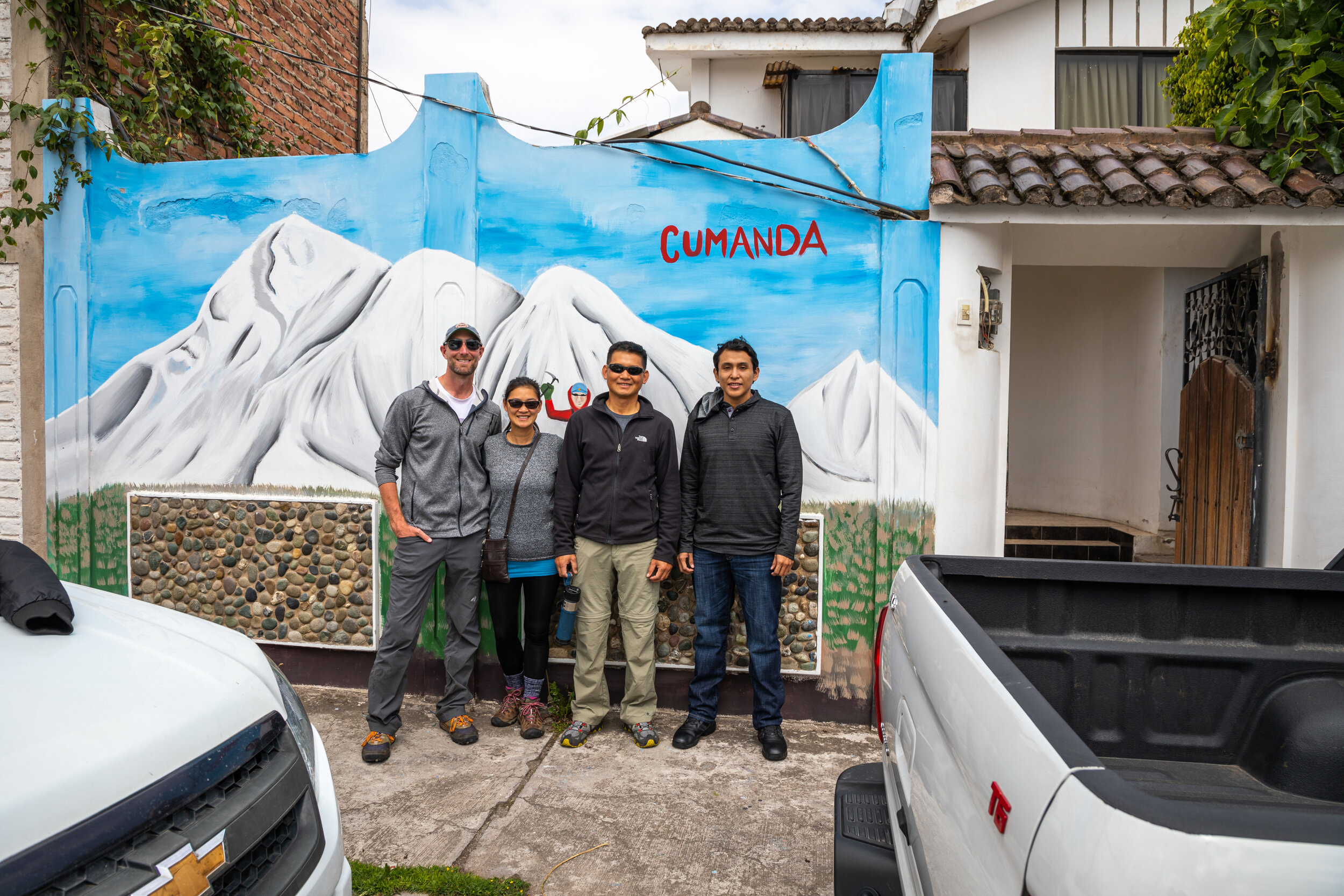
We were dropped off at a quiet little hostel at around 3,900 meters. It rained the entire first day so we stayed inside and played Ecuadorian card games taught to us by David. This down-time was not very helpful in preparing for the climb, but it was a comfortable, pleasant place with tasty meals.
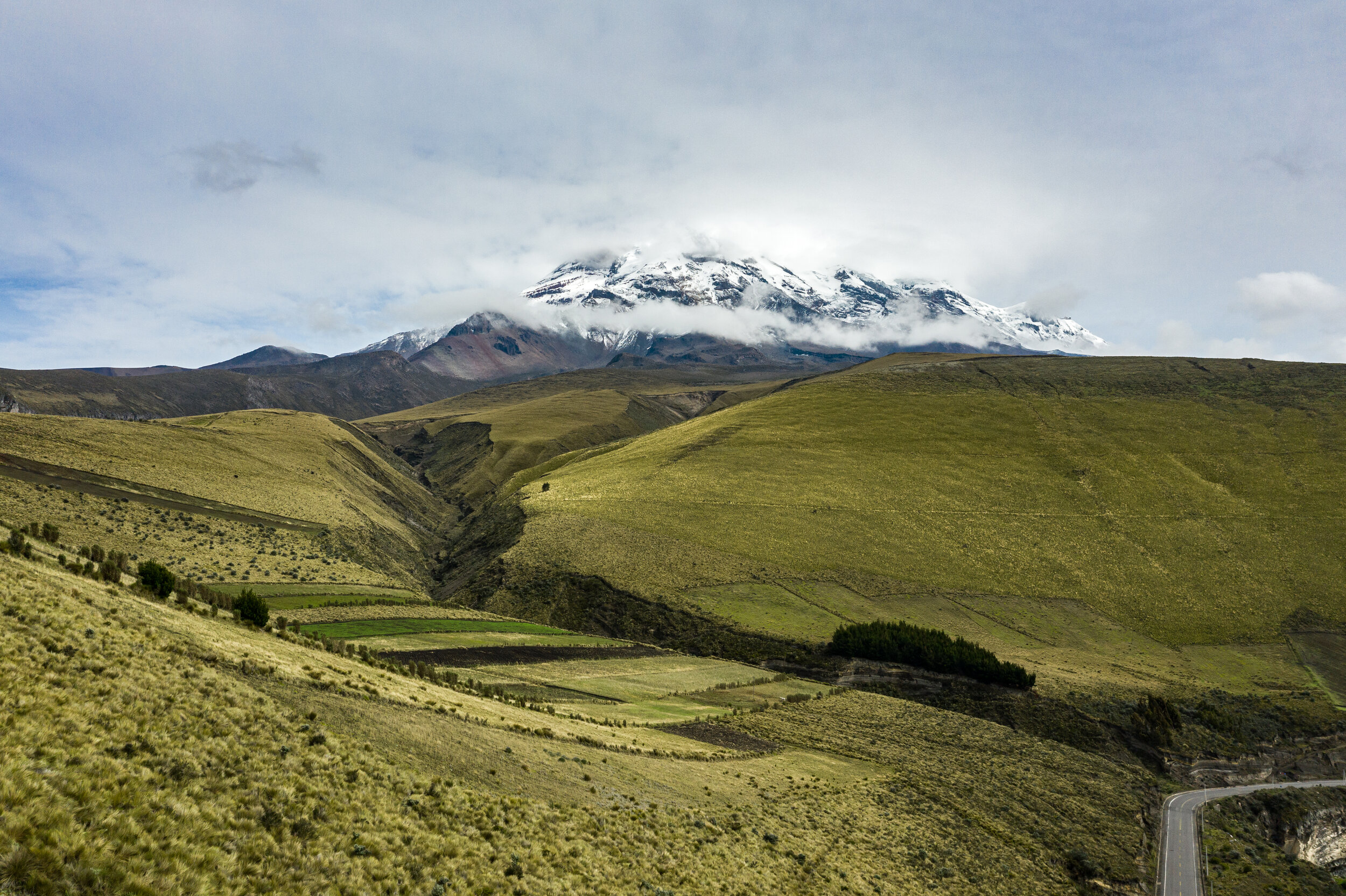

Our second day at the hostel was a little more productive. We woke up and set out for a relatively easy walk. We weren’t at an altitude that would do us much good, but David absolutely needed every bit of extra elevation that he could get. He had come to Ecuador unprepared and decided to climb Chimborazo on a whim. We ended up walking 24 kilometers round trip up the road to the entrance of Chimborazo National Park. This was a scenic stretch of road with views of Chimborazo the entire way. During our walk we climbed about 300 meters and spotted several vicuñas grazing on the high-altitude grass.

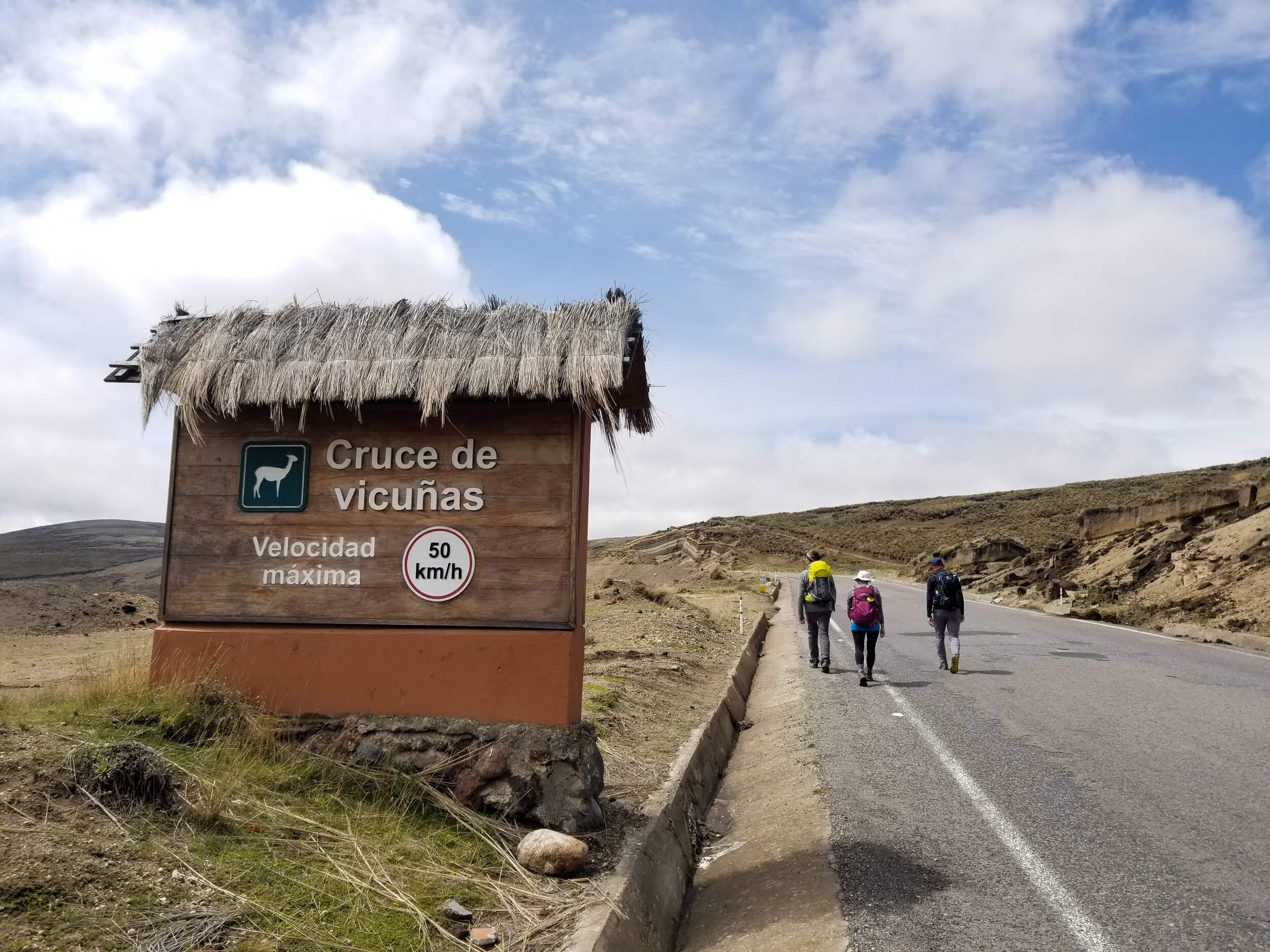
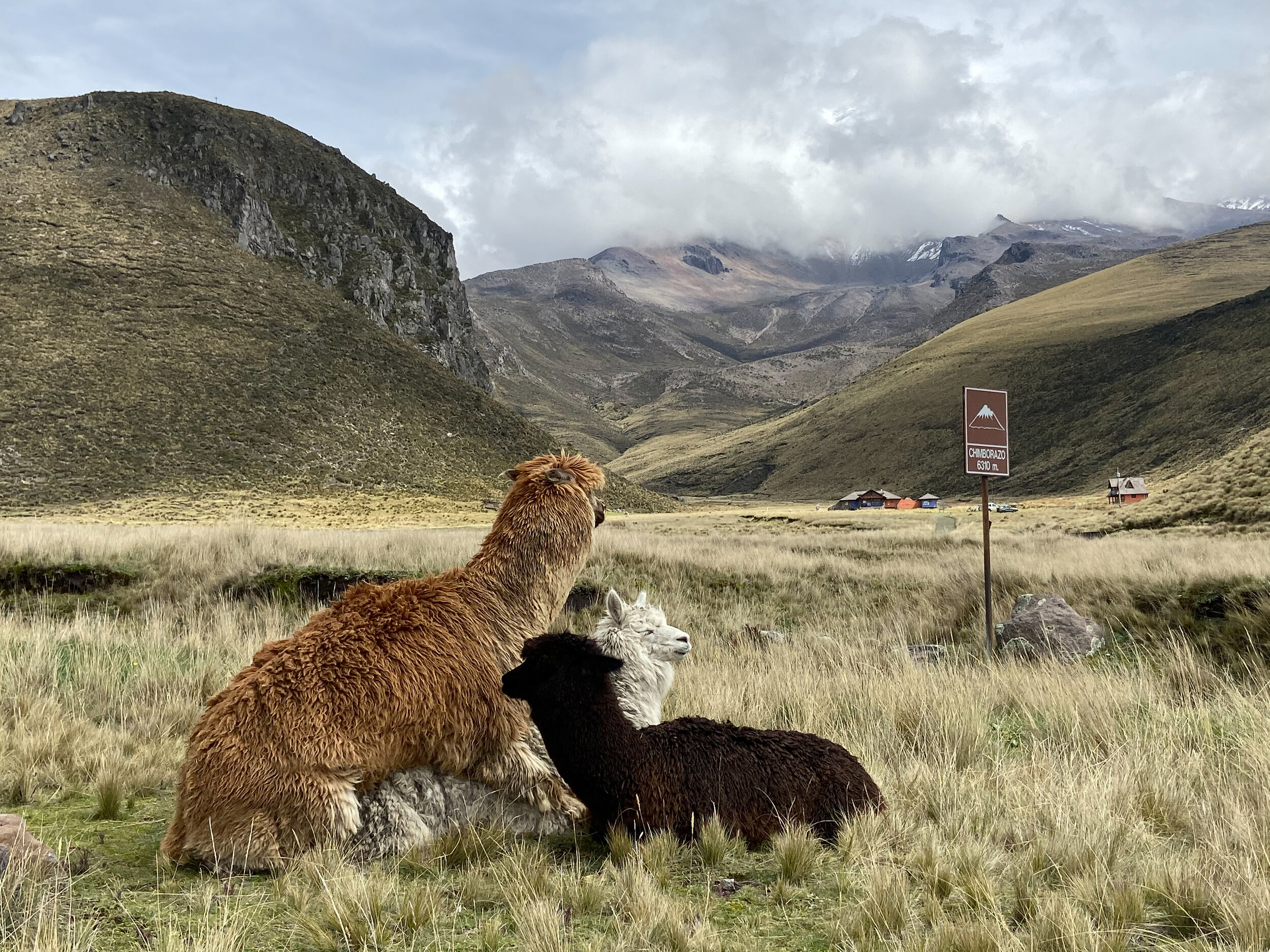
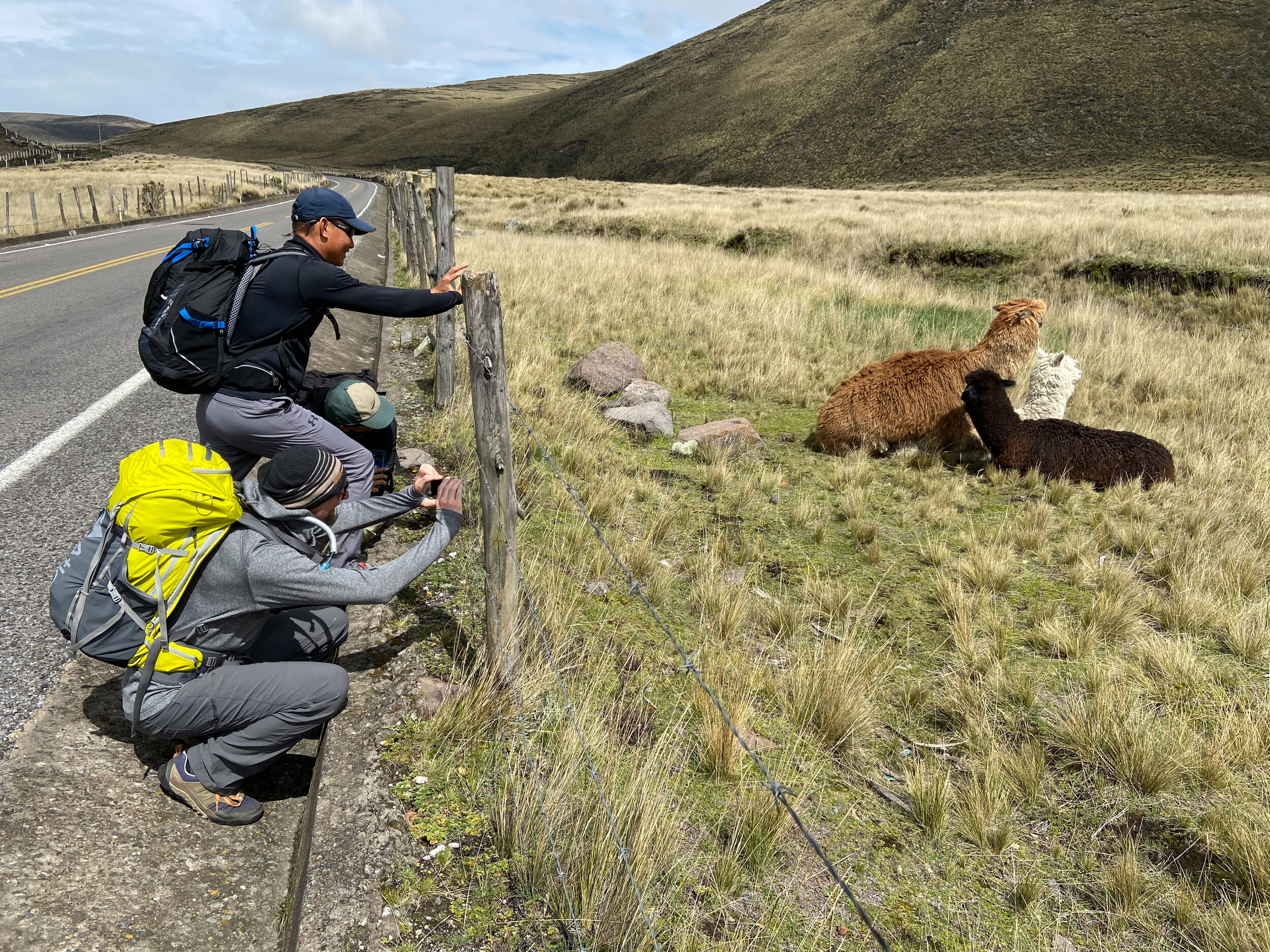

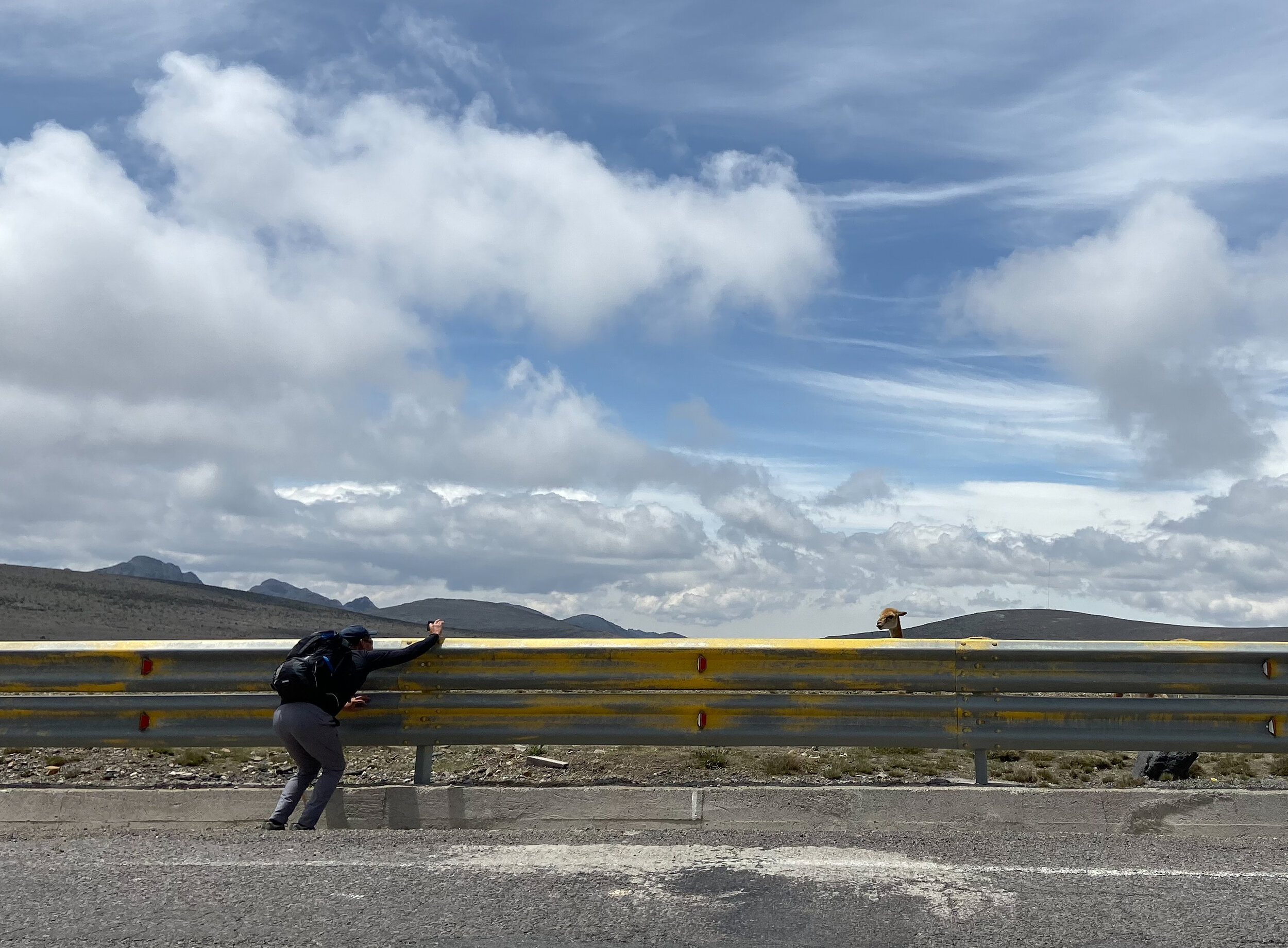

Refugio Carrel 4,850m
Later that afternoon our guides from Ecuador Eco Adventures arrived. We signed our waivers and had lunch and tea at the hostel before driving up to Refugio Carrel. This high-altitude lodge sits at the trailhead to Chimborazo. Looking back, we should have insisted on staying here the first night. This would have given us a much higher degree of acclimitization and further increased our chances of a successful summit day. The normal route up Chimborazo was closed this year because of a death on the mountain caused by a rockfall. Because of this closure we were beginning at the higher refugio but taking a longer, less direct route to the top.

We chose our bunks in the enormous sleeping area and laid down for a restless and noisy evening. We slept from 5pm to 10pm and awoke to a bustling room full of guides preparing the gear for our ascent. In total there were five climbers and four guides. We had our group of three plus David, along with a Russian-born Californian doctor who was helping monitor our oxygen levels. She was an extremely experienced high-altitude climber who spends several months of the year working as a medic on Everest. She was in her own group with her own guide.

We prepared our gear, ate a little breakfast, and headed out into the cold. The temperature was frigid and snow was lightly falling as we left the warmth of the refugio. David’s guide wasn’t ready, so we had to leave him behind. We felt bad because up until that point we had been guiding David and helping him understand what to expect on the expedition. We taught him as much as we could about how to deal with high-altitude, and now that we had left him we hoped he remembered our advice.


Even though the temperature was only in the teens, it didn’t take long for us to warm up. We quickly had to remove a layer of outerwear as we began climbing the rocky trail that led us up and away from the refugio. The light snow made the rocks a little slippery, but overall the first part of the trail was well-defined and not too steep. Everything was quiet except for the crunching of our feet on the rocks.

Our acclimitization leading up to this climb could have gone better, but we were feeling surprisingly strong. The trail started to get steeper, the snow fell a little heavier, and we began to feel the lack of oxygen slowing us down. We trudged along in the dark and tried to keep a fast enough pace to reach the summit in time. The goal on a climb like this is to reach the summit early enough so that the descent is safe. As the sun rises the snow becomes softer and more prone to avalanche. Chimborazo is particularly dangerous because of its unstable combination of rock and snow on its extremely steep slopes.



As Thu felt the altitude getting to her, she took a dose of dexamethasone. After a quick stop to put on our crampons and harnesses, the medicine did its job and she was up and ready to go. Almost like a second wind. At this point we were roped together for the remainder of the climb. We were confident and felt we had the energy to complete the climb with enough time to enjoy the summit and make it down safe and sound.

Stopping to put on our crampons.


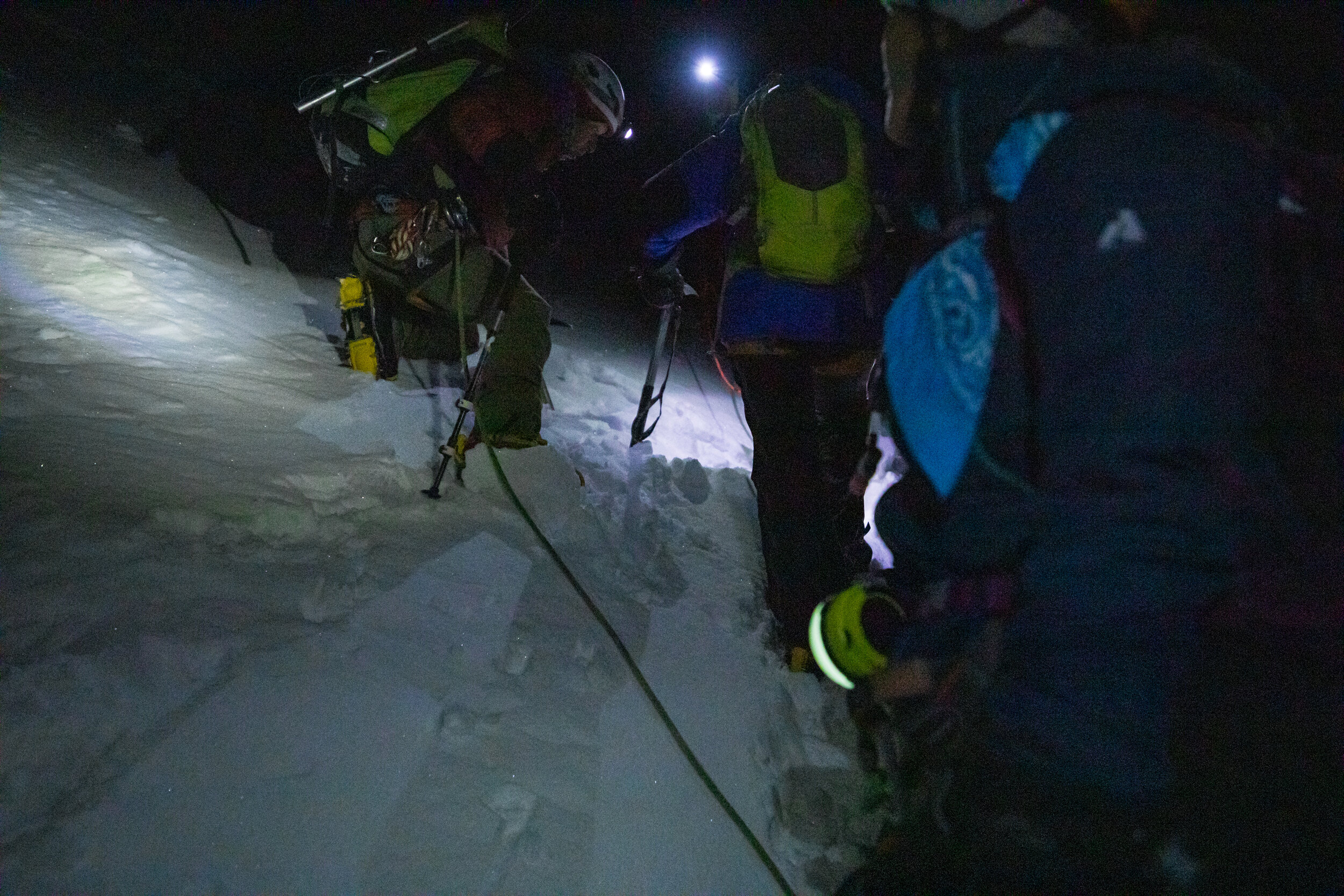
At around 18,750 feet we stopped. We had caught up with the lead climbers, and our guides started picking at the snow. They were assessing the avalanche danger, as we had reached the section with the most treacherous stretch of unstable ice and snow. After quite a bit of discussion, they decided it was too dangerous for us to continue the climb. We all agreed it was time to call it and head back down the volcano.


The moment we turned around everything seemed to get increasingly urgent. Our guides pushed us to descend as rapidly as possible to remove ourselves from the higher elevations of Chimborazo. With the sun came unstable conditions. We scrambled across snowy ridges, down treacherous rock faces, and around immense cliffs where the trail seemed to just barely cling on. During the pre-dawn ascent it was too dark to see the terrain. As the sun began to peak over the horizon, we were getting a clearer look at what we had climbed through.


Our pace slowed a bit as we cleared the steeper slopes of the volcano. Our guides were somewhere off in the distance so we felt we had a little more freedom to slow down and enjoy the scenery. After all, whether you’re on the summit or not, this volcano offers some of the most incredible vistas in Ecuador. There’s something special about the view from these stand-alone mountains like Chimborazo, Kilimanjaro and Mt. St. Helens.

The sun was slowly rising, spilling its warm, glowing light over the landscape. Chimborazo’s shadow began to form a wonderful cone stretching far off into the horizon, which is always a highlight for me when climbing in the early morning.




We stopped for a break at a camp located on a cornice with some more beautiful views. Despite the cold, we stayed for quite a while and watched the sun rise across the landscape.

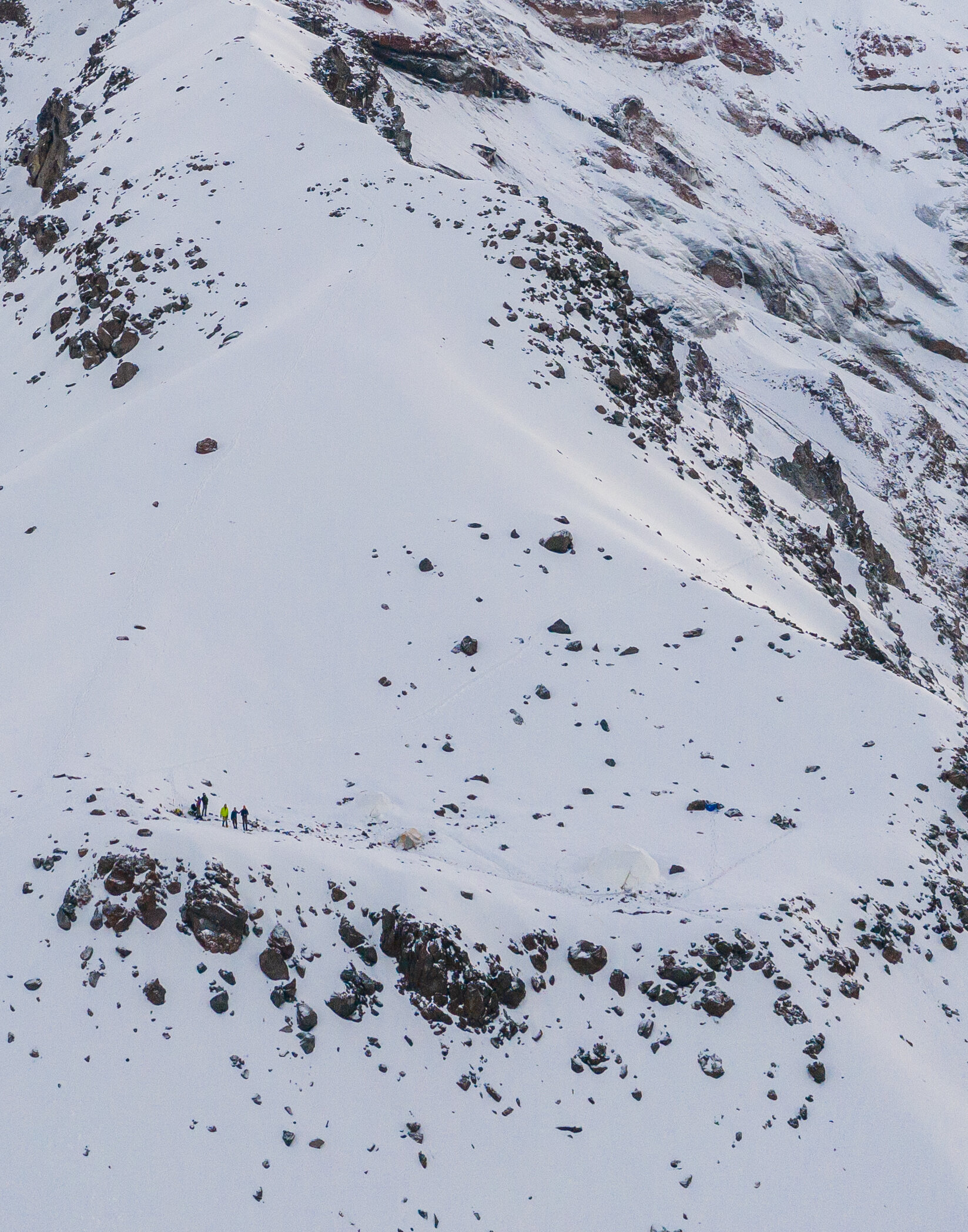




After the short break, our guides headed down a little bit before us. The trail was pretty clear so they just went ahead knowing we would find our way down. We took our time, taking pictures, stopping for the views, and being extra careful not to turn an ankle on the slippery, rocky terrain. We were extremely tired, and were looking forward to the warm refugio and breakfast, but the landscape was just too beautiful to rush through.




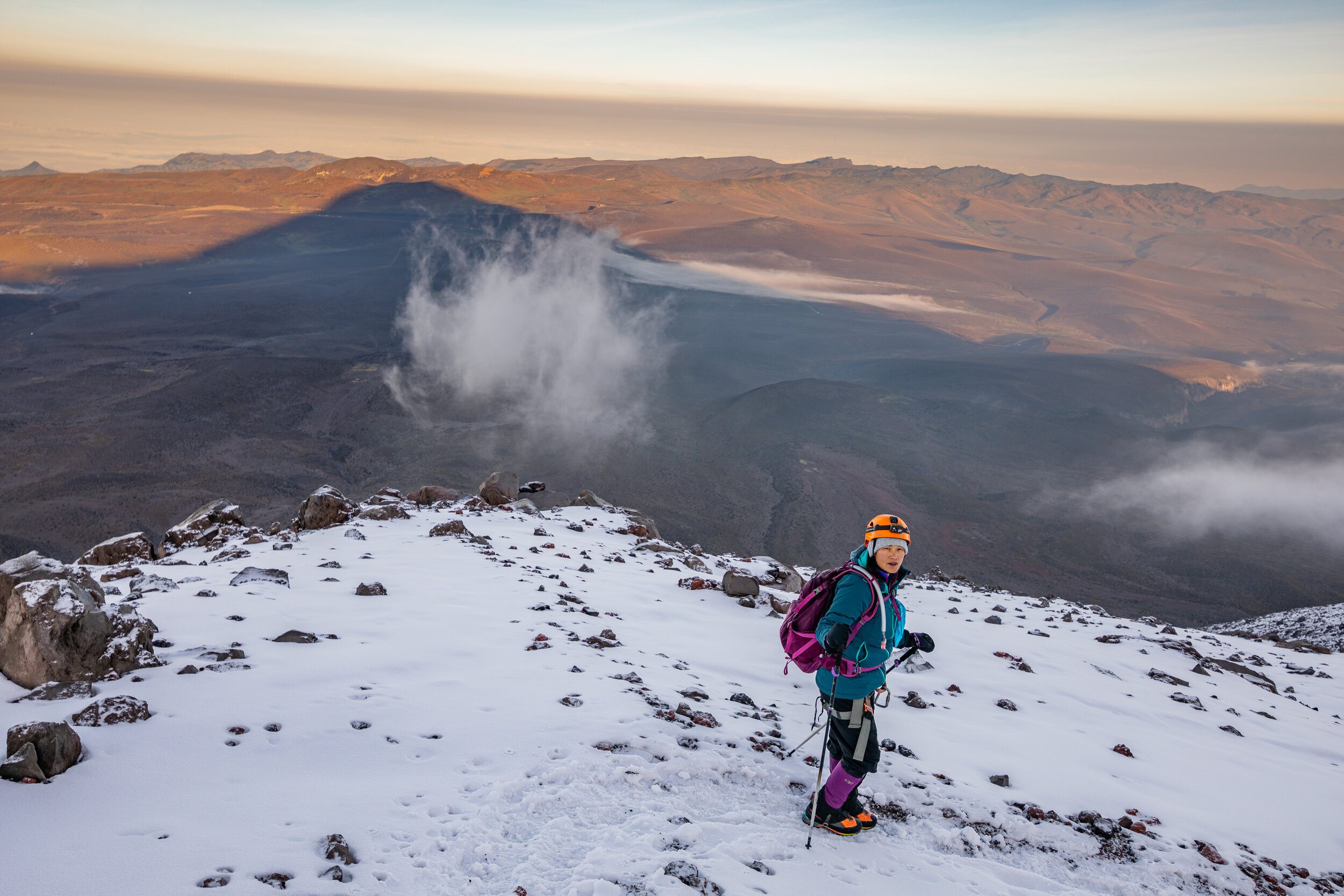





Finished! We hiked 9 kilometers with 880 meters of elevation gain. Exhausted, we stumbled into the refugio where we found David, who had only journeyed about a mile up the mountain before turning around. This had been an intense challenge. Even though we didn’t summit, we still had an incredible journey and got to experience standing near the highest point on the planet.


